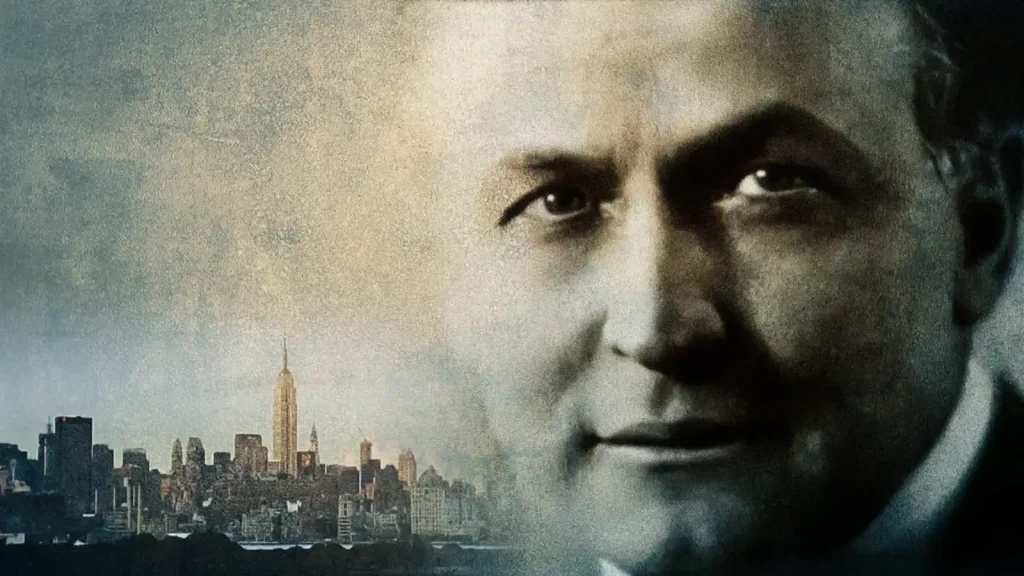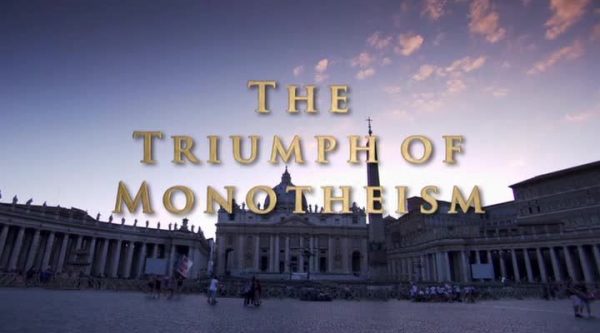The Houdini Myth – In the pantheon of early 20th-century luminaries, the name Harry Houdini stands out with an almost mystical resonance. Known as the preeminent escapologist of his era, Houdini’s life and exploits have captivated the imagination of the public and scholars alike, transcending mere entertainment to become part of the cultural lexicon.
Houdini, born Erik Weisz in Hungary in 1874, migrated to the United States as a child, where he would eventually transform himself into the most celebrated illusionist and escape artist of his time. His rise to fame was not merely a testament to his extraordinary skill but also to his unparalleled capacity to engage and astonish audiences worldwide.
His performances were legendary, encompassing escapes from handcuffs, straightjackets, and water-filled tanks, each more daring than the last. But Houdini’s impact was not limited to the spectacle of escape. He was a master showman, understanding the power of narrative and suspense, and he utilized these elements to captivate his audiences, keeping them on the edge of their seats.
The secrets behind Houdini’s escapes have long been the subject of speculation and intrigue. Today, restored archive footage, coupled with interviews from historians and contemporary illusionists, provides insight into the mechanics and artistry behind his most breathtaking feats. These explorations reveal not just the technical skill involved but also the profound psychological acumen Houdini possessed. He was adept at understanding human perception and psychology, which he leveraged to make his acts more compelling and his escapes more mystifying.
Houdini’s legacy extends beyond his death in 1926. He became an icon of the possibility of transcending physical and metaphorical bonds. His life’s work challenges the limits of human capability and resilience, embodying the eternal human quest for freedom and the defiance of the seemingly impossible.
His enduring influence is evident in the way magicians and escapologists still cite him as a primary inspiration, aspiring to the heights of skill and showmanship he exemplified. Moreover, Houdini’s skepticism of spiritual mediums and his crusade against fraudulence in the spiritualist movements of his time add another layer to his complex character. He was a staunch advocate for reason and critical thinking, using his knowledge of illusion to debunk claims of supernatural powers.
The exploration of Houdini’s life and legacy is more than a recounting of thrilling escapes; it is a study in the art of illusion, the psychology of spectacle, and the indomitable human spirit. Through the lens of historical analysis and the reflections of those who keep his art alive, we gain a deeper understanding of the man behind the myth. Houdini’s story is a compelling narrative of ambition, ingenuity, and the relentless pursuit of the extraordinary, leaving an indelible mark on the world of entertainment and beyond.
The Houdini Myth
In the realm of entertainment, few figures have captivated the imagination of audiences quite like Harry Houdini. This legendary escapologist, born Erik Weisz in Budapest in 1874, would go on to become an icon of the early 20th century, a maestro of illusion and escapology whose daring feats and indomitable spirit continue to inspire awe and wonder to this day.
Through painstakingly restored archive footage and insightful interviews with renowned historians and illusionists, we unravel the extraordinary impact Houdini had on his audiences and unveil the secrets behind some of his most astonishing and death-defying escapes.
From humble beginnings as a struggling performer, Houdini’s relentless determination and innovative thinking propelled him to the pinnacle of his craft. His meteoric rise to fame was fueled by a combination of showmanship, technical mastery, and an unwavering belief in his abilities to conquer the seemingly impossible.
One of Houdini’s most celebrated feats was his ability to escape from restraints and confinements that would leave mere mortals utterly helpless. Whether it was wriggling free from tightly bound ropes, escaping from straightjackets while suspended upside down, or extricating himself from locked water-filled tanks, Houdini’s incredible physical dexterity and mental fortitude left audiences spellbound.
But his prowess extended far beyond mere physical escapes. Houdini’s repertoire also included mind-boggling illusions that challenged the very boundaries of reality. From making elephants disappear on stage to seemingly defying the laws of gravity, his performances were a masterclass in misdirection and sleight of hand.
Yet, it was perhaps Houdini’s ability to connect with his audience that truly set him apart. With a showman’s flair and a magnetic personality, he drew spectators into his world, inviting them to suspend their disbelief and embrace the wonders he had to offer. His performances were not mere displays of trickery but rather a celebration of the human spirit’s capacity to defy limitations and triumph over adversity.
As we delve deeper into the life and legacy of this enigmatic figure, we uncover the meticulous planning, rigorous training, and relentless dedication that underpinned his success. Houdini’s escapes were not mere feats of physical prowess but rather the culmination of years of study, practice, and a deep understanding of the mechanics of locks, restraints, and human psychology.
Through interviews with contemporary illusionists and historians, we gain invaluable insights into the techniques and principles that governed Houdini’s craft. From the use of specialized tools and equipment to the art of misdirection and the importance of maintaining absolute composure under pressure, we unravel the layers of deception that made his escapes so captivating.
But beyond the technical mastery, Houdini’s enduring appeal lies in his ability to inspire and empower. His unwavering determination to push boundaries and defy conventions resonates with audiences even today, serving as a powerful reminder of the transformative potential of human ingenuity and perseverance.
In conclusion, the legend of Harry Houdini endures as a testament to the transformative power of art and the unyielding human desire to challenge the confines of reality. His life inspires us to question the boundaries of the possible and to imagine a world where the only limits are those of our own making. Through the archival footage that captures his remarkable feats and the voices of those who study his legacy, Houdini’s spirit continues to captivate and inspire, ensuring that his extraordinary impact on audiences and the art of escape will be remembered for generations to come.
F.A.Q. on Harry Houdini and The Houdini Myth
Q.: Who was Harry Houdini, and why is he significant in the world of magic and escapology?
A.: Harry Houdini, born Erik Weisz in Hungary in 1874, was an illustrious illusionist and escape artist whose daring feats captivated audiences worldwide in the early 20th century. Houdini’s significance lies in his revolutionary escape techniques, charismatic showmanship, and his profound impact on the art of magic and escapology. His ability to escape from handcuffs, straightjackets, and water-filled tanks, under seemingly impossible conditions, established him as the preeminent escapologist of his time.
Q.: How did Houdini captivate his audience, and what made his performances legendary?
A.: Houdini captivated his audience through a masterful combination of physical dexterity, psychological acumen, and narrative suspense. His performances were legendary because they transcended traditional magic shows, incorporating dramatic escapes that challenged human perception and physical limitations. Houdini’s engagement with his audience, his flair for dramatic storytelling, and his ability to perform under extreme conditions made each performance an unforgettable spectacle.
Q.: What were some of Houdini’s most notable escapes, and how did he accomplish them?
A.: Some of Houdini’s most notable escapes included freeing himself from straightjackets while suspended upside down, escaping from locked, water-filled tanks, and wriggling free from tightly bound ropes. While the specifics of how he accomplished these feats were closely guarded secrets, it is known that Houdini utilized a deep understanding of locks, restraints, and physical conditioning, coupled with techniques like misdirection and sleight of hand, to execute his escapes.
Q.: Did Houdini engage in any activities beyond his escape performances?
A.: Beyond his escape performances, Houdini was a staunch skeptic of spiritual mediums and dedicated a significant part of his career to debunking fraudulence in the spiritualist movements of his time. His crusade against fake mediums and his efforts to expose their tricks underscored his commitment to reason and critical thinking. Additionally, Houdini’s legacy includes contributions to the fields of cinema and aviation, showcasing his diverse interests and talents.
Q.: How has Houdini’s legacy influenced modern magicians and the field of escapology?
A.: Houdini’s legacy has profoundly influenced modern magicians and escapologists, who often cite him as a primary inspiration for their careers. His pioneering techniques, his philosophy of pushing the limits of human endurance, and his innovative approach to performance art have set the standards for what is possible in magic and escapology. Many contemporary performers aim to emulate Houdini’s skill, creativity, and ability to connect with audiences, ensuring his enduring impact on the art form.
Q.: How can one learn more about Houdini and his techniques?
A.: Those interested in learning more about Houdini and his techniques can explore a variety of resources, including biographies, documentaries, and archival footage. Many historians and illusionists have published works analyzing Houdini’s life, his performances, and the secrets behind his most famous escapes. Additionally, magic history forums and museums dedicated to Houdini offer insights into his methods and his contributions to the world of magic.
Q.: What can Houdini teach us about the pursuit of excellence and innovation?
A.: Houdini teaches us that the pursuit of excellence and innovation requires dedication, relentless determination, and a willingness to challenge conventional boundaries. His career exemplifies how passion, combined with an unwavering belief in one’s abilities, can lead to groundbreaking achievements. Houdini’s life story encourages us to question the limits of the possible and to strive for the extraordinary, reminding us that with creativity and perseverance, we can overcome any obstacle.




